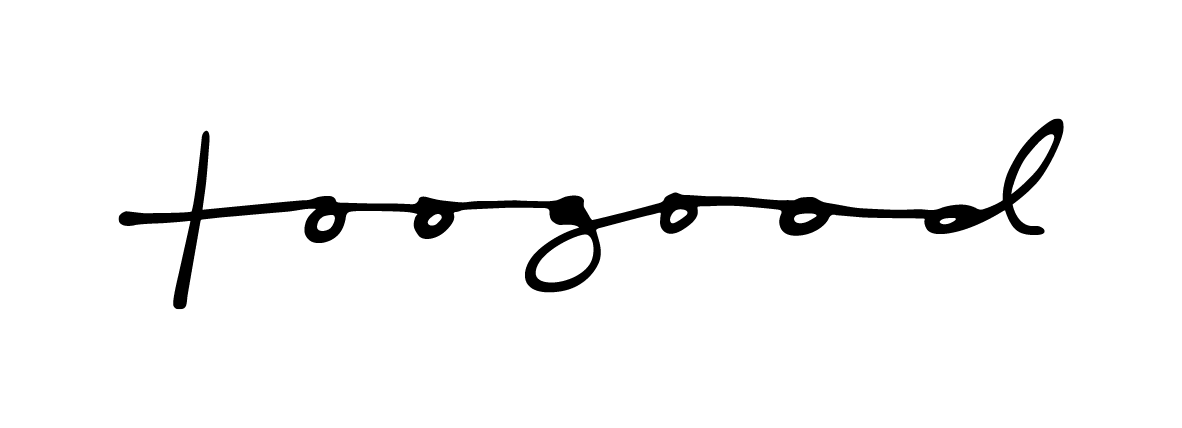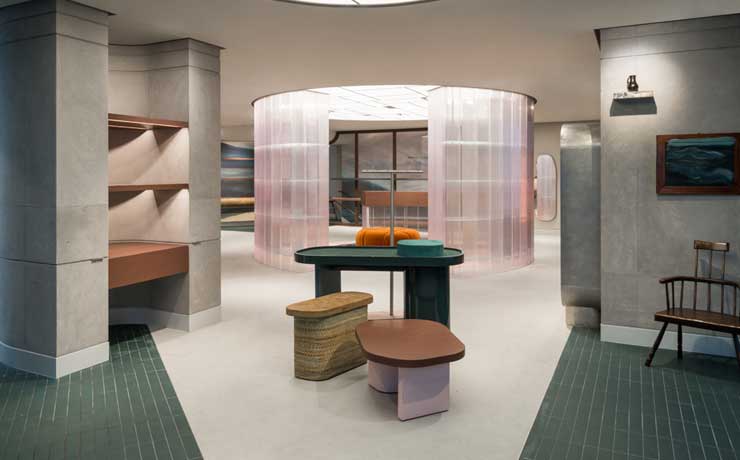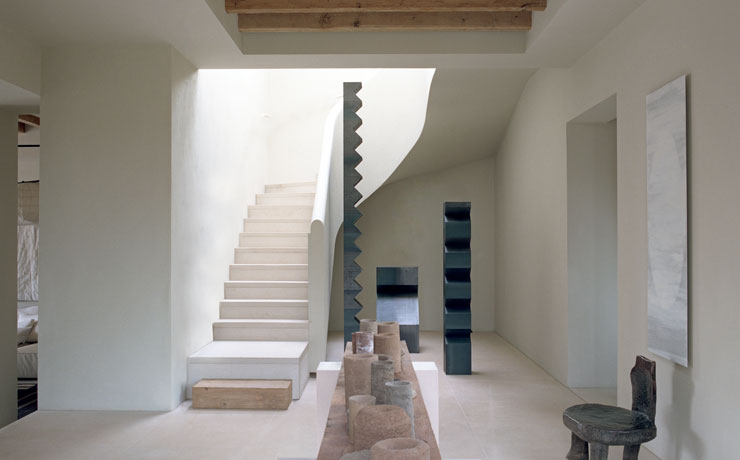December 2018
VOGUE
Words: Ellie Pithers
Photography: Simon
Inside Faye Toogood's Restored Modernist Home
Vogue takes a peek inside a decluttered modernist house in Highgate – unearthed and restored by Faye Toogood and Matt Gibberd.
If you are a frequent consumer of house porn, chances are The Modern House will feature heavily in your browser history. A sumptuously packaged estate agency for some of the UK's most remarkable homes – modernist and otherwise – its co-founder Matt Gibberd nonetheless insists that he was never tempted to purchase a property from his own website. Until, that is, he was invited to make a valuation of a box-like building in London's Highgate.
You'd never know it was there. Set back from the road, sandwiched between a row of smart 19th-century townhouses and hidden behind an unprepossessing garage door, the former home of the Swiss-born architect Walter Segal doesn't show up on Google Maps. Built in the early '60s by Segal, the enthusiastic father of the self-build movement, for himself and his family, the house is as compact and functional as a Swiss Army knife. There is a vast, verdant garden. At its foot sits the first "Segal method" building, which dispensed with traditional bricklaying and plastering techniques in favour of mass-produced materials assembled in their market sizes. (It took Segal two weeks to make and cost £800; he and his family lived in it while their home was being built.) One glance and Gibberd was smitten.
"It was an awkward conversation," he admits, recalling that first visit to the house. "I stood in the garden thinking, 'Wow. This is very special.' So, I said to the owner, It would be dishonest of me to give you a valuation because, funnily enough, I think this house would be great for our family? He took it very well, and put it on the market with a local agent". Fate conspired: several months later Gibberd received a call. The owner had had multiple offers but never succeeded in putting a chain together. Gibberd, meanwhile, had just completed the sale of his family home in nearby Canonbury. "Basically, he wanted to sell it to us because he knew we weren't going to flatten it," he smiles.
On the contrary: Gibberd was uniquely placed to safeguard the house – which needed modernising – being an architecture journalist who is married to the polymathic designer Faye Toogood. "We just stripped it back," says Toogood, in characteristically nonchalant fashion. "And we decided that everything had to be white." The original acoustic-board ceilings and exposed pale bricks were restored; faded cupboard doors replaced with cream felt-covered plywood; bathrooms upgraded in deliciously smooth Portman stone composite, and the kitchen via polished concrete.
The couple's furniture from their house in Canonbury – a listed Georgian terrace, all moody marble mantelpieces and dramatic dark-gloss wood – had to go. The other house was a bit like living in a Vermeer painting but when we put all our old furniture in here, everything just looked so completely wrong," says Toogood. Now their only concession to colour is a Patrick Procktor painting given to Toogood by Gibberd for their wedding anniversary, which hangs above their bed – that and plenty of lush leaves from the trees gently brushing the windows. "Waking up in the morning, it feels like you're in a treehouse; she says.
The couple, both 41, met while working at The World gin Interiors magazine when they were in their early twenties. Gibberd was a writer and sub-editor; Toogood worked her way up from prop stylist to interiors editor. She left in 2008 to launch a multidisciplinary studio, and now designs furniture and interiors for clients including Mulberry and Hermès, as well as running a luxuriously sculptural but wearable) fashion line with her sister, Erica, entitled Toogood. Gibberd co-founded The Modern House in 2005, bringing his editorial eye to real estate, an industry that has largely eschewed storytelling. They have three children – newborn twins, Wren and Etta, and a five-year-old daughter, Indigo – and split their time between Hampshire, near where Toogood's parents live, and London.
Three young children? In this exquisitely uncluttered house in shades of ivory and clotted cream? Toogood laughs. "I took the approach that if they grew up with it, they'd get used to it. It's when you remove things and try to put them back that they want to touch it and use it and maybe break it." Gibberd gestures at the cleverly hidden cupboards that Segal installed throughout the house. "Everything comes out and it's carnage, and then everything is put away at the end of the day. Chaos is good." He admits, however, that he cannot get to sleep if there's mess. "It's very strange but I just can't have stuff on the bedroom floor," he smiles, wryly. "I can't handle it at all. I have to put it in a cupboard."
If his preference for hyper-clean interiors has been softened, it's down to Toogood, who describes her work as "minimalist folk". "When I first met Matt I had a flat full of stuff" she chuckles. "I was very acquisitive, always collecting things; he was almost the opposite. When we moved in together he made me edit everything down, which was good. I like the process of cleaning out, picking things that are important to me." Still, Gibberd, the son of architects (his grandfather, Sir Frederick Gibberd, was the celebrated modernist architect ‘who designed the Metropolitan Cathedral in Liverpool), has had to adapt to his wife's decorative urges. "I very much trust Faye's judgement," he says. "And though some of her stuff is quite flamboyant, it's still very ordered."
Certainly, the overall effect is effortlessly functional but serene, leavened by the sunlight that streams through original Segal-era windows comprising simple, frameless panels of glass that slide in front of each other. Neither is there anything clinical about the minimalism: each room is filled with curiosities. A courtyard dotted with Willy Guhl planters leads to the kitchen, filled with aluminium cupboards sprayed with car paint and dominated by counters, found in a junk shop, from an 18th-century dairy. In the living room, a tapestry by Toogood hangs above the sofa, next to a silo-shaped tambour unit from her first collection of furniture, and an inherited Marcel Breuer chair. Throughout the house, the wails are peppered with understated works, including a Henry Moore drawing that once belonged to Gibberd's grandfather, a Roger Hilton picture, a Malick Sidibé photograph bought by Faye when she visited the Malian photographer in his studio for a World of Interiors shoot years ago, and a hat by Judy Blame.
The composition changes periodically, often to disconcerting effect. "If Faye has an afternoon to herself, which happens rarely, I'll come home and find her with a slightly flustered look," says Gibberd. "I'll creep around and realise she's completely reorganised the house." "1 just love this conversation with objects!" laughs Toogood, the daughter of an ornithologist, who spent her countryside childhood curating her collections °frocks and birds' eggs. "Arranging things over and over is something in my life I always come back to." Occasionally it gets too much. "When that happens, I just lock her in here," jokes Gibberd, gesturing to the walk-in wardrobe. "I call this Faye's panic room. I let her out half an hour later and generally she's much calmer."
See the full article in-situ here.



